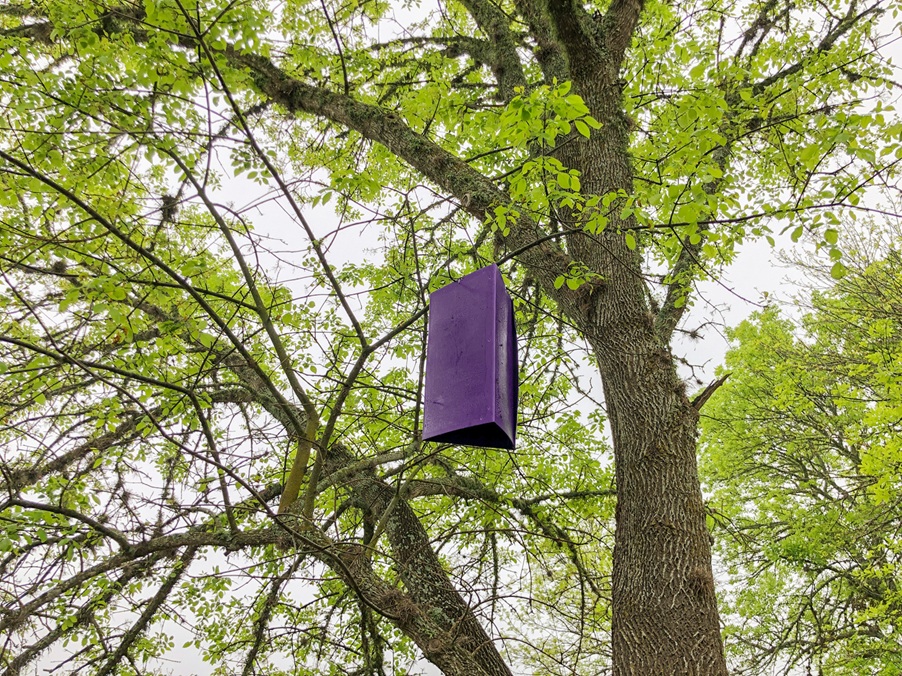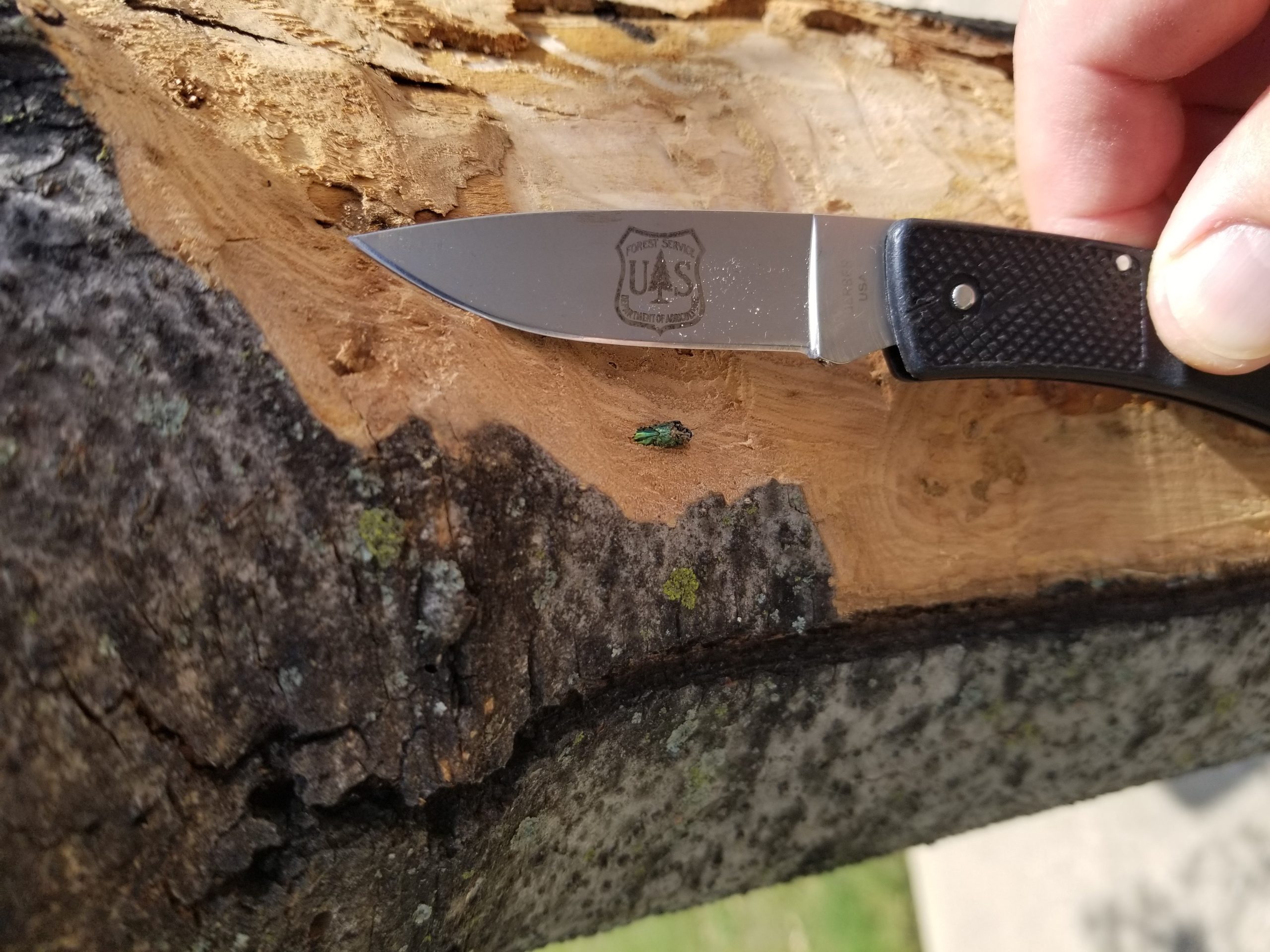COLLEGE STATION, Texas – The presence of the invasive emerald ash borer (EAB) has been confirmed in Jack, Navarro, Somervell, Bell and Rockwall counties. Bell County’s confirmation makes it the southernmost confirmed location of EAB in the nation.
First confirmed in Texas in 2016, EAB has spread to 31 counties statewide. In 2024, EAB was confirmed in five new Texas counties.
“EAB is one of the worst invasive insects to impact North American forests,” said Allen Smith, Texas A&M Forest Service Regional Forest Health Coordinator. “EAB does not typically fly far distances naturally. Their expansion across the state and U.S. has been expedited due to human activity, like moving infected firewood and ash tree products across state and county lines.”
Texas A&M Forest Service deploys traps annually beginning in February to proactively monitor EAB. Currently, the agency has 554 traps placed throughout Texas.

“Our timing in trapping EAB is important because its emergence is dependent on weather and temperature conditions,” said Smith.
Once the presence of EAB is confirmed in a county, the Texas Department of Agriculture assumes regulatory responsibility which includes the establishment of quarantines. The state’s mandatory quarantine by the Texas Department of Agriculture restricts movement of any woody ash material exiting the county or quarantined area.
The Texas Department of Agriculture also regulates sawmills, kiln dry facilities, mulch products, wood packing material, ash nursery stock and all hardwood firewood.
“Because EAB is transported unintentionally on wood products, the quarantine helps slow the beetle’s spread by restricting the movement of wood in and out of affected areas,” said Demian Gomez, Texas A&M Forest Service Regional Forest Health Coordinator. “Texans can be proactive in preventing the spread of EAB and other pests and diseases by burning firewood where it is bought.”

All species of ash are susceptible to EAB. Infested ash trees may show few to no symptoms in early stages.
Larval EAB feed in the phloem of branches and trunks, preventing nutrients from being transported from the leaves to the rest of the tree. Tree mortality can occur five to six years after the beetle is introduced.
Symptoms of infestation may include dead branches near the top of a tree, leafy shoots sprouting from the trunk, bark splits exposing s-shaped larval galleries, extensive woodpecker activity and d-shaped exit holes.

Adult EAB are dark emerald green, one-half inch long and one-eighth inch wide. They may be seen near ash trees, especially between May and June in Texas, when they are more likely to fly.
Texans can help minimize the spread of EAB by diversifying tree and plant species on their property, following the 10-20-30 rule—planting no more than 10% of any one species, 20% of any one genus or 30% of any one family.
For more information on EAB in Texas, visit https://tfsweb.tamu.edu/trees/invasive-species/invasive-insects/emerald-ash-borer/.
For information from the Texas Department of Agriculture on EAB quarantine, visit https://texasagriculture.gov/RegulatoryPrograms/PlantQuality/PestandDiseaseAlerts/EmeraldAshBorer.aspx.
To report EAB, please call the EAB Hotline at 1-866-322-4512.
About EAB in Texas
EAB is a destructive, non‐native, wood‐boring pest that targets all ash tree species. Native to Asia, forest health experts have been monitoring its movement across the United States since 2002. It has spread to more than half the states in America — and killed millions of ash trees. The beetle was first detected in Texas in 2016 in Harrison County in northeast Texas. In 2025, EAB has been confirmed in Jack, Navarro, Somervell, Bell and Rockwall counties.








